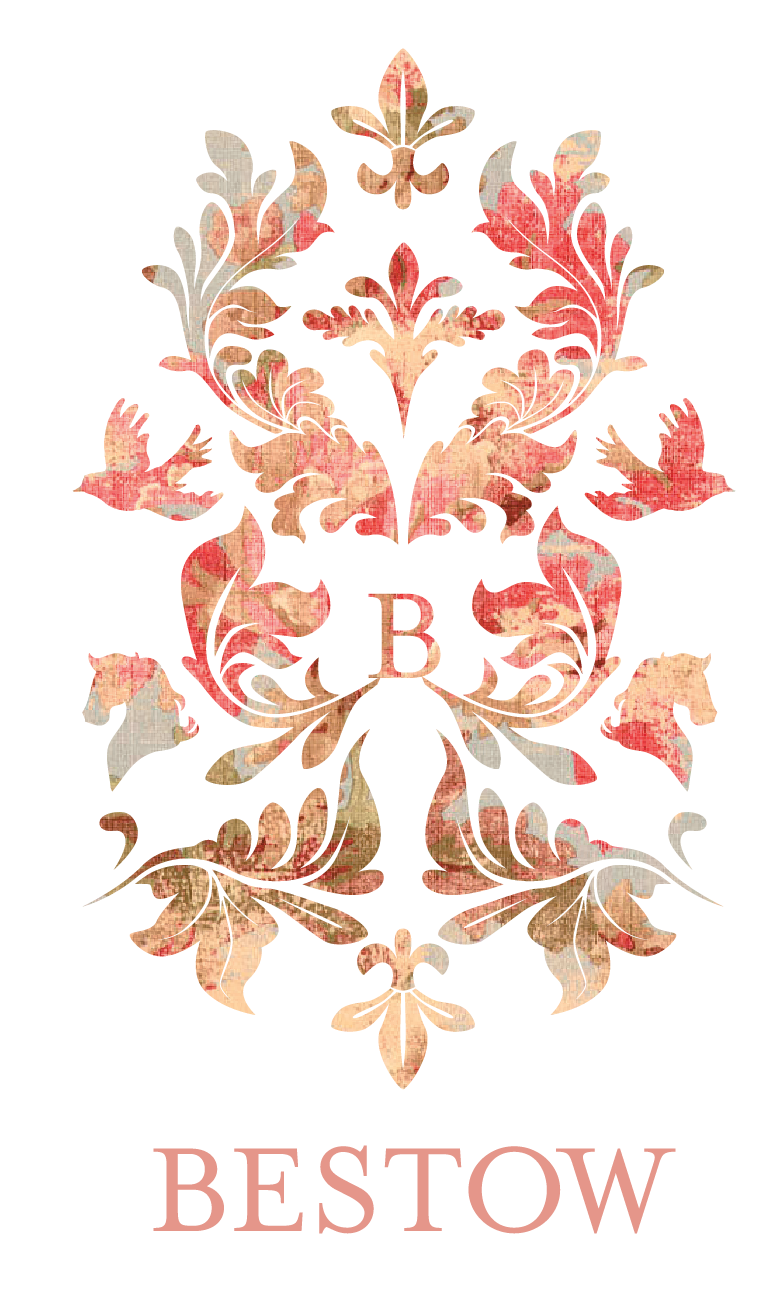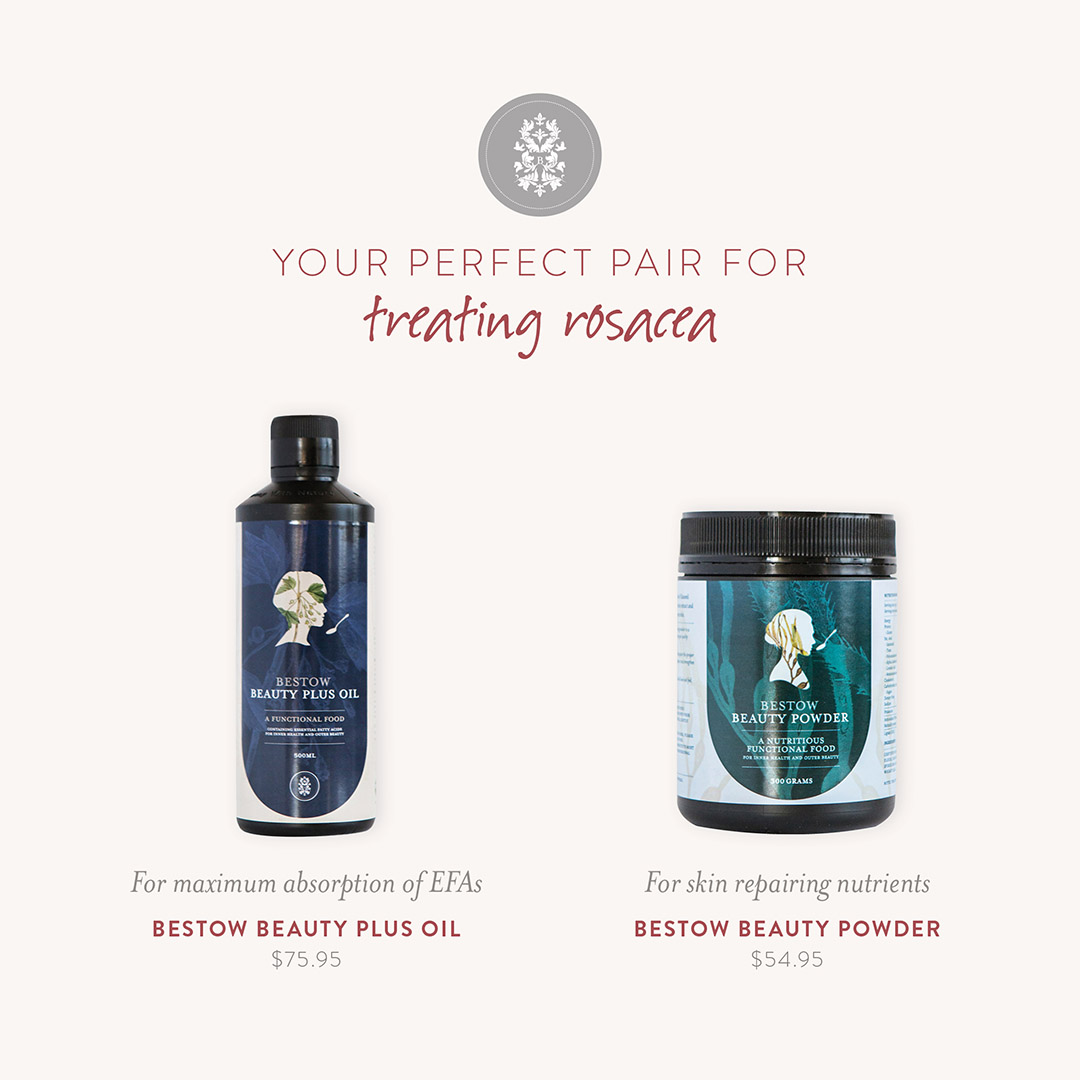THE INTERNAL APPROACH TO ROSACEA
Soothing your skin from within
April is Rosacea Awareness Month in Australia. Rosacea (from the Latin “like roses”) is a chronic disorder involving an increased reactivity of the capillaries to heat, leading to flushing and ultimately to telangiectasia and inflamed red papules. Rosacea is most certainly impacted upon by what is going on internally and any topical program needs to be supported from the inside to minimise the factors that worsen this condition and provide the skin with the nutrients that help it to heal.
Inflammatory or heating foods and drinks fuel this condition, nutritional deficiencies weaken the skin and make it more vulnerable and even digestive health has been linked to this distressing disorder.
Here are four tips to support your topical protocol:
1. Replace Heating Foods with Cooling, Calming Foods
Certain foods can heat your skin, causing it to appear reddened and sensitised. These foods are called ‘vasodilators’ and they heat your skin by increasing the blood flow through your fine capillary system. If you have a client with rosacea, they need to try to avoid or reduce ‘heating foods’ such as cayenne, oranges, strawberries, peanuts or cashews, and caffeine. Instead, bestowing their skin with strength and vitality by choosing cooling, soothing alternatives.
Heating foods: Hot and spicy foods (especially the three C’s – curry, chili & cayenne)
Cooling foods: Fresh herbs and less ‘spicy’ spices such as ginger, cloves, nutmeg, cardamom, cinnamon, cumin, coriander and mustard seeds.
_______________________________________________
Heating foods: Oranges, orange juice and strawberries. Some people are particularly sensitive to oranges and strawberries and may develop a rash soon after eating them.
Cooling foods: Any other fresh fruit in season.
_______________________________________________
Heating foods: Peanuts, peanut butter and cashews. Peanuts and cashews are common culprits for food allergies and skin reactions.
Cooling foods: Tahini (made of sesame seeds), and almond butter (source of magnesium and the most alkaline forming). Raw, unsalted nuts such as almonds or Brazil nuts.
_______________________________________________
Heating drinks: Caffeine, alcohol and energy drinks, all of which heat and dehydrate your skin (coffee and red wine also weaken capillaries).
Cooling drinks: Herbal teas and naturally decaffeinated coffee. Avoid red wine with sensitive skin. Cooling alternatives are kombucha, kefir, water with mint.
2. Be Aware of Other Heating Factors
Other factors that heat your client’s skin include internal factors like emotional stress or menopause. External factors like strenuous exercise, sun exposure, hot showers, steam rooms and cooking over a hot stove will also worsen rosacea symptoms.
3. Gut Health Plays a Role
Poor digestion is linked with skin conditions such as rosacea. Low stomach acid results in intestinal bacterial overgrowth and H Pylori. Eating bitter foods like dark leafy greens (collards and kale) can help. The Bestow Be Cleansed is a helpful, fibrous addition to the diet of any rosacea sufferers with gut health and digestive issues.
4. Nutrients We Need to Supply
Vitamin C foods help strengthen the fine capillary network of the skin. Vitamin C can be easily found in foods like fresh fruit and vegetables. Vitamin A foods like sweet potato, carrots and leafy greens help strengthen the skin. Essential Fatty Acids are crucial in the treatment of rosacea. They are not only anti-inflammatory but they also strengthen and support the acid mantle which protects the skin from environmental irritants.
Use one tablespoon of Bestow Beauty Plus Oil every day mixed into food or a smoothie for maximum absorption. Other nutrients like B Complex vitamins and zinc are also needed to support the skin’s healing. One tablespoon a day of Bestow Beauty Powder, added a smoothie, can provide many of the nutrients the skin needs to repair.
NOTE: Additional zinc may be required in some cases. You can get a zinc test at any good pharmacy or health food shop.


